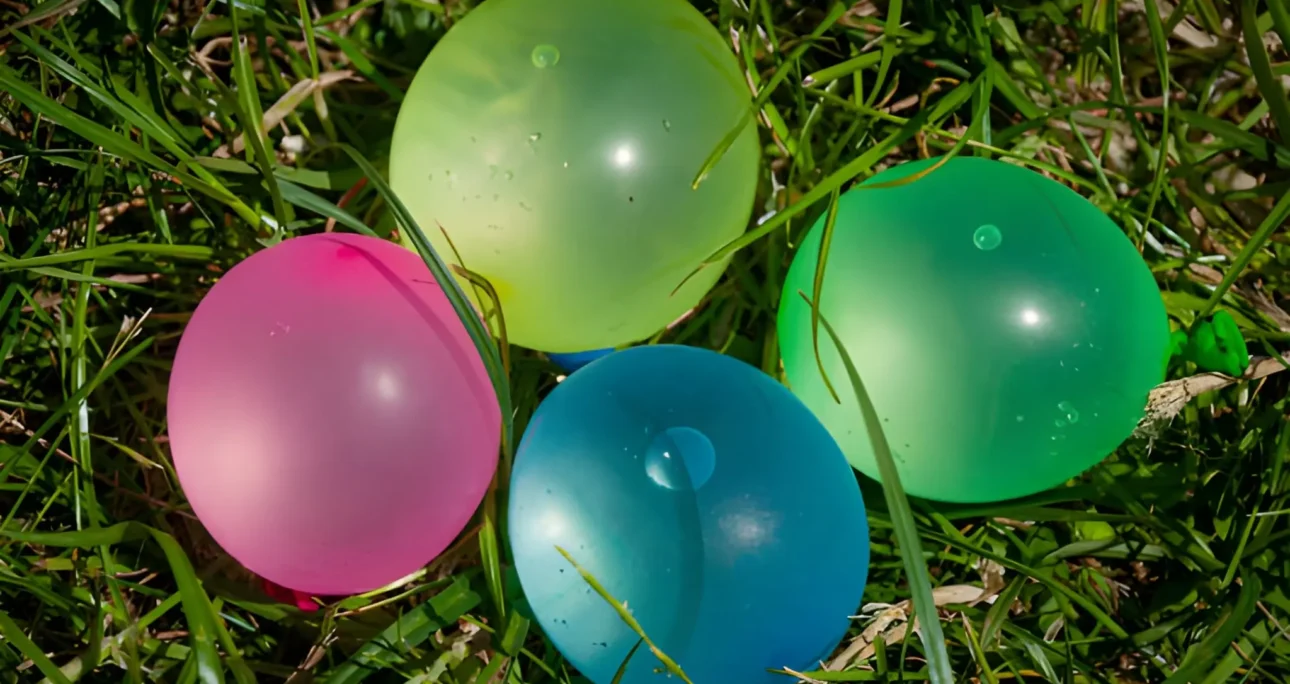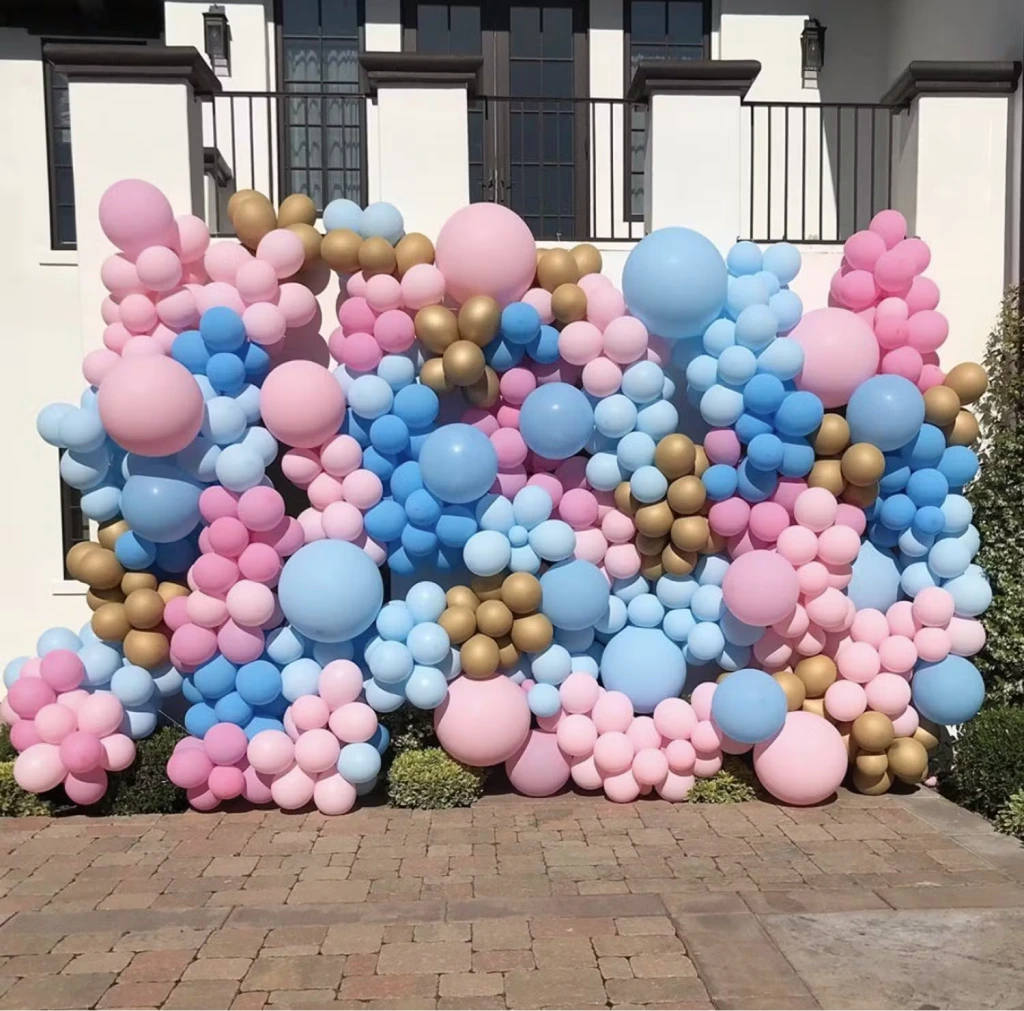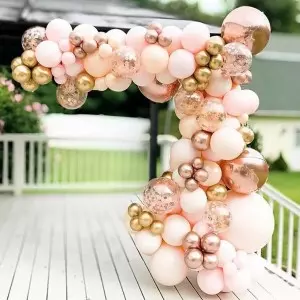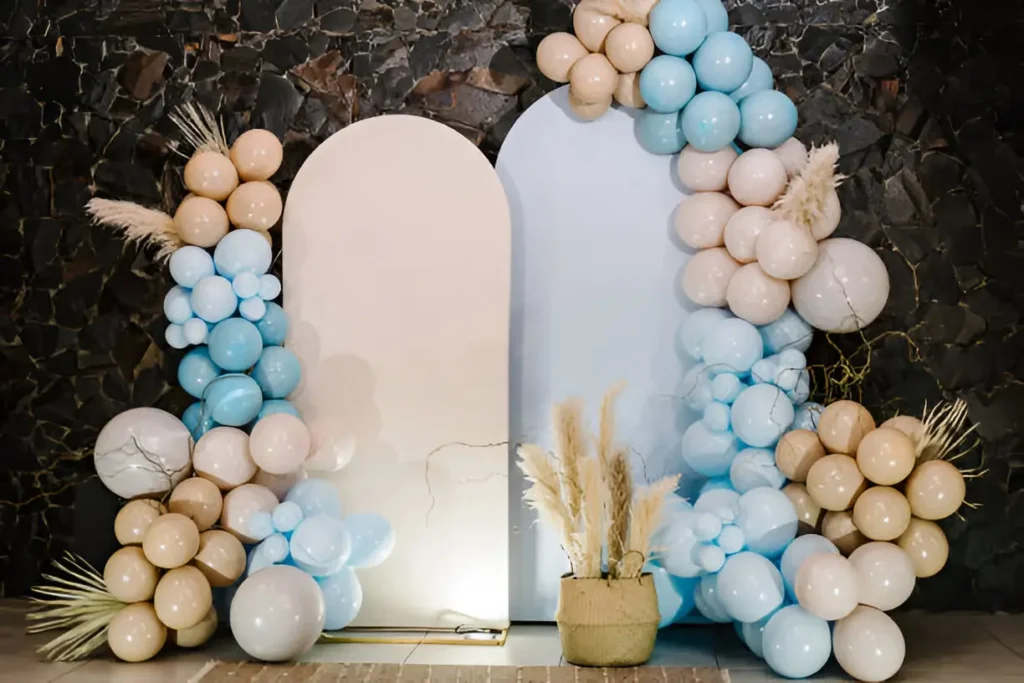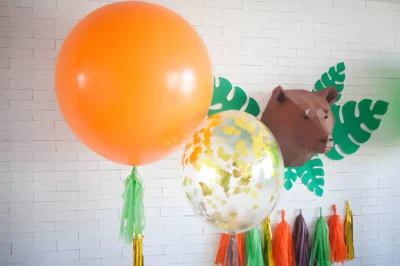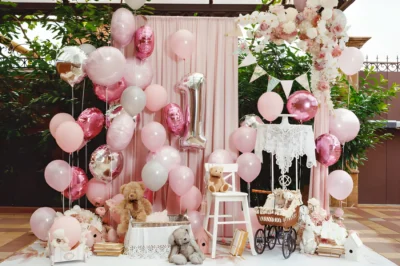Besides balloons pop when they touch grass, they can pop for many reasons, but grass is one of the most common ones people notice outdoors. It might look soft, but even a small touch from grass can make a balloon go BOOM.
What’s Happening When a Balloon Hits Grass?
When a balloon hits grass, it pops because the ground isn’t as soft as it seems. Grass blades, seed heads, or tiny sticks can have sharp points that poke the balloon’s surface. Since the rubber is stretched pretty tight, even a small touch can make it burst.
Balloons filled too much are even easier to pop. Warm weather and sunlight also make the rubber weaker, so when a balloon touches the grass, it doesn’t take much for it to explode.
Balloon Materials and Durability
Not all balloons handle the outdoors the same way. Some pop fast in the heat, while others can last all day without trouble.
Latex balloons are soft, stretchy, and affordable, but they don’t do well in the sun. UV rays make the rubber dry and weak, so they’re better for shaded places or indoor events.
Foil or Mylar balloons hold helium longer and have a nice shine, but balloon popping can occur if they touch sharp grass or sticks. They work well both indoors and outdoors, just keep them off rough surfaces.
Vinyl balloons are thicker and stronger than the others, which makes them perfect for long events or big outdoor displays like a balloon arch or a balloon sculpture. They can handle sunlight and heat for days, though they cost more.
Even balloons made from the same material can be different in quality. Cheaper ones are thinner and pop easily, higher-quality versions stretch better and last longer. Spending a little more on good balloons can make your balloon decor in Chicago look nicer and stay intact all day.
Inflation Techniques to Prevent Balloon Popping
How you blow up your balloons matters just as much as where you put them. These simple things can help prevent balloon pop on grass.
Follow the 90% rule – don’t fill balloons all the way. When a balloon is blown up to its limit, the rubber gets too thin and tight, making it easy to burst. Leaving a little space inside gives it room to expand in the heat and stay strong even when the temperature changes.
Air-filled balloons usually do better outside than helium ones. Helium balloons float, so they can drift down into the grass or hit sharp objects and pop. Air-filled balloons, like arches or garlands, stay in place and don’t touch the ground as much, which helps them last longer. That’s why air-filled decorations are the safer choice for sunny days and outdoor parties.
If you’re taking balloons from an air-conditioned room to the outdoors, give them time to adapt. A sudden jump from cool air to hot sunlight can make the air inside expand too fast, and the balloon might pop right away. Let them rest in the shade for about 15 to 30 minutes before setting them up. This helps even out the pressure.
Some balloon decorators use a trick called double-stuffing, where one balloon is placed inside another. It makes the balloon thicker and stronger, so it lasts longer and doesn’t pop as easily in the sun. It also gives colors a deeper, richer look that stands out in photos. It takes a little more time and effort though.
How to Keep Balloons From Bursting on Grass
Keeping balloons from popping on grass takes a little prep work, but nothing too fancy, really. Start by getting the lawn ready before setting anything up. Mow the grass a day early so sharp seed heads are cut down, then rake the area to remove weeds and clippings. Walk around and look for things like burrs, thistles, or small sticks that could poke holes. Water the grass lightly the night before – soft, damp ground is much safer for balloons than dry, crunchy grass.
You can also put something between the balloons and the grass. A thin tarp, mat, or foam board works well under balloon clusters, and clear stands can lift them off the ground while still looking nice in photos. If you want something fancier, use weighted bases.
When it’s time to decorate, timing and shade matter, too. Set up your balloons close to the start of the party so they’re not sitting in the sun too long. Try to use trees or tents for natural shade to help them last longer. Adding weights keeps balloons from sagging, and hanging garlands on arches or frames keeps them away from the ground, which is nice, too.
During the party, if it’s long, check your decorations now and then to make sure nothing has fallen or touched the grass. Replace or at least discard popped balloons to keep things looking nice. It’s smart to keep a small repair kit handy with extra balloons, a pump, and clips for quick fixes. If it’s a big event, you can also hire a professional balloon decorator to handle setup and keep everything looking great.
Myths About Balloons Popping on Grass
Some people believe that grass makes the air inside a balloon expand, but that’s not what happens. Heat is the real reason. When balloons sit in the sun, the air or helium inside warms up and expands, pushing hard against the balloon walls. The latex gets thinner and weaker until it finally pops. Grass itself only makes balloons burst if it has sharp edges, burrs, or thorns.
Another common idea is that static electricity makes balloons pop. In truth, static alone doesn’t have enough strength to do that. When you rub a balloon on your clothes or carpet, it might stick to things or jump around, but it won’t pop (usually). Most outdoor balloon bursts happen because of tiny holes, too much air, or heat from the sun, not static.
There’s also a misunderstanding about Hi-Float, the liquid used inside helium balloons. Hi-Float helps balloons stay inflated longer indoors by slowing down helium loss, but it can’t stop them from popping outside. It doesn’t protect against heat, UV rays, or sharp grass. It helps balloons float higher and longer, but it doesn’t make them tougher.
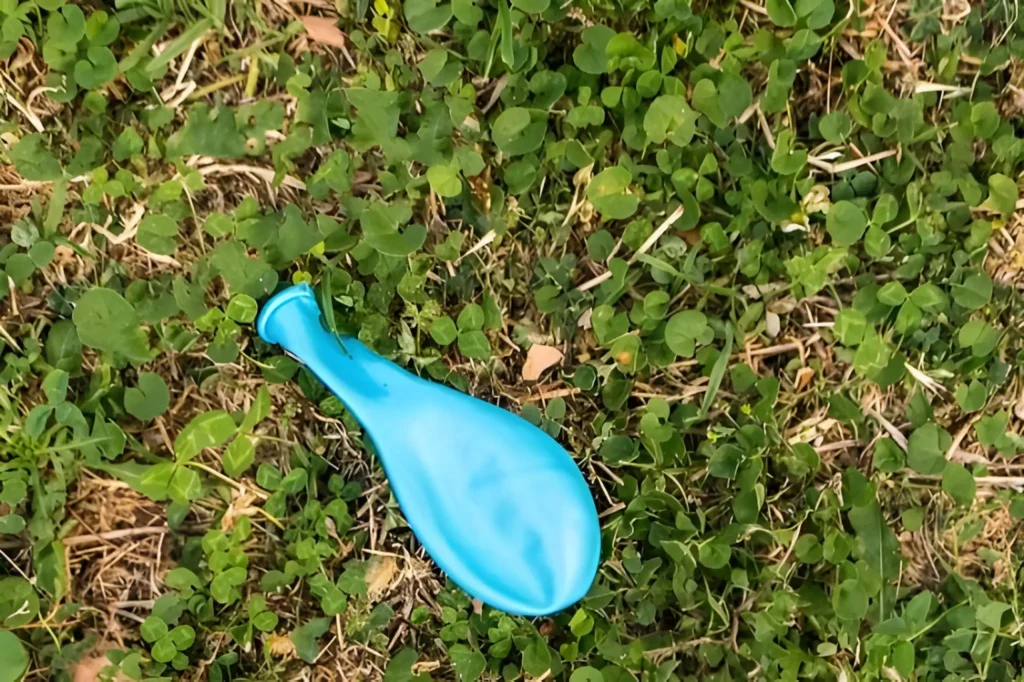
Tips to Safely Use Balloons at Your Outdoor Events
Child and Pet Safety With Balloons on Lawns:
- Look for sharp weeds or burrs like thistles before setting up your balloons.
- Walk barefoot around the area to feel for hidden spines or rough spots.
- Use mats or balloon stands to cover uneven or risky patches of grass.
- Make sure small kids don’t pull on balloons or try to put them in their mouths.
- Pick up any broken balloon pieces right away to keep pets and children safe.
- Have an adult keep an eye on kids playing near balloon decorations.
Balloon Disposal and Recycling:
- Don’t let balloons float away – they can hurt animals and cause litter.
- Pop latex balloons after your event and seal them in a trash bag.
- If possible, take foil balloons to recycling spots instead of throwing them away.
- Keep a bag or bin nearby so you can clean up quickly once the party ends.
Safety Against Power Line Balloon Hazards:
- Always keep balloons at least 10 feet away from power lines.
- Use heavy bases or weights so your balloons stay in place.
- Avoid tying balloons to lightweight chairs, tents, or fences that could tip over.
- Check all ties and anchors on windy days to make sure nothing blows away.
- Remind anyone helping you to be cautious around wires and electric poles.
Conclusion
Balloons always make outdoor parties more fun, but a few simple things can help them last longer and stay safe. Check the grass for anything sharp before the party, keep the balloons out of direct sun, and don’t blow them up too much – especially when using balloons in the heat. Pick up any broken pieces, recycle where possible, and make sure kids and pets stay away from popped balloons.
Are you decorating with party balloons, setting up a photo booth rental, or planning to rent a bounce house for an event? Good balloon care makes everything look better for longer. And if you want beautiful birthday balloons or creative balloon displays in the Chicago area, reach out to BalloonLab – they’ll help you with all your possible and impossible balloon needs.
Why Do Balloons Pop When They Touch Grass - FAQ
How Grass Cause Balloon Popping?
Balloons can pop when they touch grass due to several factors:
- Rough Surface: Grass can have sharp edges or blades that might puncture the balloon. Even though grass appears soft, it can still have small, pointed surfaces that are enough to burst the latex or rubber.
- Friction and Pressure: When a balloon rolls or rubs against the grass, the pressure and friction may cause weak spots in the balloon to burst, especially if the balloon is already close to its bursting point.
- Environmental Factors: Grass can sometimes hold small debris like twigs or stones that could cause punctures.
Can Any Type of Balloon Pop From Touching Grass?
Yes, most types of balloons (latex or rubber) can pop when they touch grass, especially if the surface of the grass has small rough or sharp objects. However, balloons that are over-inflated are more prone to popping, as they are already under higher pressure.
Is There a Way to Prevent a Balloon From Popping on Grass?
To minimize the chances of a balloon popping on grass:
- Inflate the balloon less: If the balloon is not fully inflated, there is less internal pressure, reducing the risk of it popping.
- Use balloons made of stronger material: Foil balloons or thicker latex balloons are more durable.
- Check the area for sharp objects: Before placing the balloon on the grass, check for any sharp debris or twigs that could cause punctures.
- Place the balloon on a flat surface: If possible, avoid placing balloons directly on uneven or rough grass.

